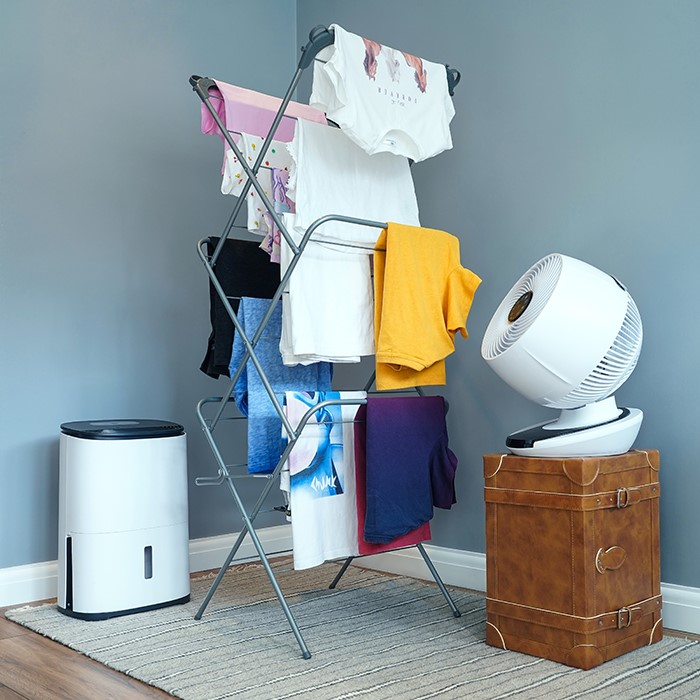Dehumidifiers have been helping households save money during the cost-of-living crisis as an affordable solution to prevent damp and mould. With high electricity bills seemingly here to stay, Chris Michael, air treatment expert and managing director of Meaco, explains how households can continue to benefit from a dehumidifier and save money during the summer.
2022’s energy price increases led more consumers to switch off their central heating and avoid using the tumble dryer last winter than ever before. The consequence of this has been increased levels of damp and mould in the home which are not only unsightly and expensive to remove but can also pose a health risk. Dehumidifiers have been a popular inexpensive solution to stop increased moisture in its tracks before it causes damage.
There are also further benefits that a dehumidifier can provide during summer to improve quality of life, the fabric of the home and even to keep consumers cool during hot, sticky weather. Here are some tips on how to save money and keep cool with a dehumidifier in the coming warmer months.

Remove humid air to aid sleep
Unlike arid countries like Australia or regions such as the Middle East, the UK experiences high levels of humidity during the summer. This weather creates hot, sticky and stuffy conditions which can cause discomfort indoors, especially when trying to sleep at night.
A dehumidifier removes both hot and cold moisture from the air, which means that during those exceptionally humid days and nights, it will suck in air that contributes to a room feeling sticky and replace it with dry treated air.
Dry washing on wet days
While warmer temperatures provide the opportunity for many to dry clothes outside and improve ventilation at home, it is rare for a UK summer to be completely free of rainy days. What’s more, some households don’t have the option to hang clothes outside. In these instances, clothes will still need to be dried on airers inside the home which increases moisture levels in the air. This combined with warmer temperatures creates a perfect environment for mould to grow and spread.
If moisture levels are high and nothing is done to decrease them, homes will likely see mould form on cool spots such as a shaded wall. Unfortunately, an open window won’t do much to decrease moisture levels as the outside temperature will either be similar or warmer than inside, so cooler air cannot enter the house to warm up and dry the air inside the home.
By using a dehumidifier to help dry washing in the home, consumers can decrease moisture levels and keep mould at bay during summer, when it can grow fast.

Keep mould at bay
In some instances, moisture levels are high in a home even without the addition of drying wet washing. Moisture is in the air around us and comes from a range of everyday activities such as bathing, cooking and even breathing.
It is in these situations that a dehumidifier is critical to avoid mould from forming, which can create damp smells or mildew, and even damage soft furnishings. All of this is costly to remove, repair or replace.
Energy-efficient dehumidifiers have humidistats, which means the machine will work towards reducing the moisture to the recommended indoor humidity level of 55% RH before switching itself off. It will only switch back on again if it detects a rise in humidity.

Manage hay fever symptoms
For hay fever sufferers, the summer months bring cold-like symptoms that can make day-to-day life difficult. Some dehumidifiers feature a HEPA filter, which means that the dehumidifier not only removes moisture from the air, but also cleans it and makes it healthier.
A HEPA filter traps most bacteria, pollens and some virus particles, protecting households from viruses and allergies like pollen. The dual function of these dehumidifiers provides households with greater value and saves on potentially purchasing a separate air purifier to relieve hay fever symptoms in the home during the summer.
Dehumidifiers can cost as little as 5p per hour to operate, and investing in an energy efficient dehumidifier over other similar products on the market can save households up to nearly £150 cheaper a year to run*. The low cost of running a dehumidifier means households can save money all year round by reducing the causes of condensation, damp and mould.
For more information on dehumidifiers, take a look at Meaco’s dehumidifier buying guide.






